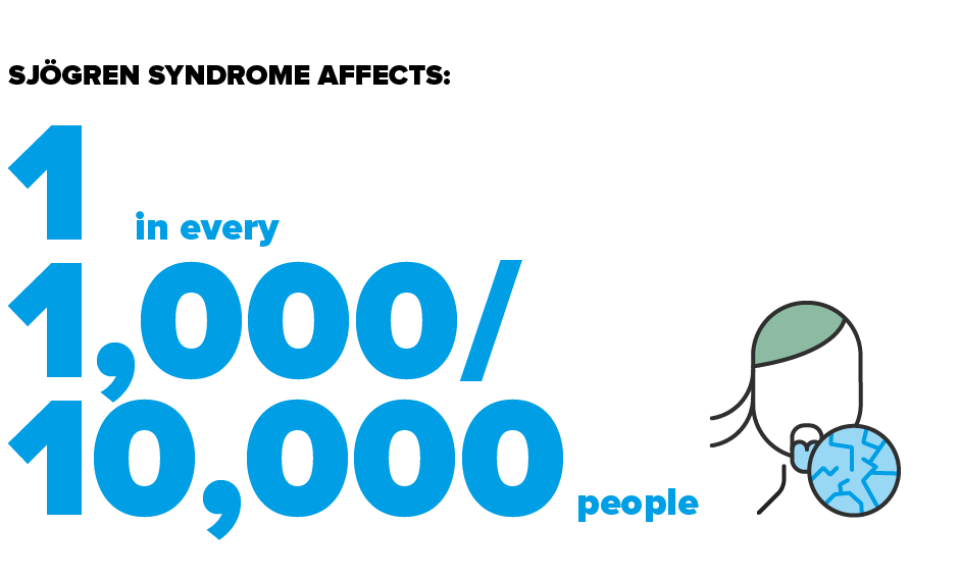- What is it?
- Causes
- Symptoms
- Diagnosis
- Treatment
- Evolution of the disease
- Living with the disease
- Research
- Frequently asked questions
-
La enfermedad en el Clínic
-
Equipo y estructura
What is the sjögren syndrome?
Sjögren Syndrome is a systemic autoimmune disease in which the body's immune system reacts against its own structures. The cause is not known, but the symptoms are dryness of the mucous membranes (more than 95% of patients) and effects on the internal organs.
Sjögren Syndrome explained in first person
We are convinced that environmental factors play a very important role in the development and appearance of this illness, but today we cannot answer the question “why did I get this disease?
I’ve had to adapt my lifestyle, because as I always say, Sjögren’s syndrome is my lifetime companion. So, there are times when I can live completely normally, but I also have certain limitations.
Sjögren Syndrome is a systemic autoimmune disease. Autoimmune because the immune system, responsible for defending the organism from external aggression, reacts against the body itself, producing so-called "autoantibodies" and injuries to its own structures. The reasons for this are not known. In the case of Sjögren syndrome, the organism attacks the exocrine glands that are responsible for producing liquids such as saliva, tears, secretions from the larynx, trachea, and vagina, liquids that hydrate, lubricate and soften the parts of the body that are in contact with the outside, the so-called mucous membranes that are the tissues covering the mouth, nose, eyes, and so on.
The damage that the body’s immune system produces in the exocrine glands incapacitates and prevents them from manufacturing these liquids correctly. This means the patient suffers symptoms of dryness in these areas.
It is a systemic disease because, in addition to the dryness, it can affect any organ in the body and produce a wide variety of symptoms and effects.
Classification of Sjögren Syndrome
Sjögren Syndrome is classified into two types depending on whether or not the disease is accompanied by other autoimmune diseases:

Primary Sjögren Syndrome. This appears without the presence of another associated autoimmune disease.

Sjögren Syndrome associated with other diseases. The term secondary Sjögren Syndrome, which has been used for years as a result of a translation from English, is a poor term because the word "secondary" seems to indicate that it is something unimportant, or caused by another disease.In this case, the patient, in addition to Sjögren, suffers other autoimmune or rheumatological diseases. The most frequent are systemic lupus erythematosus, rheumatoid arthritis, systemic sclerosis, and inflammatory myopathies. Sjögren Syndrome may also be associated with autoimmune diseases that affect a single organ ("organ-specific"). The most common are thyroiditis, primary biliary cholangitis, and autoimmune hepatitis.
How many people does Sjögren Syndrome affect?
It can appear at any age and in either sex, but it is more frequent in women over 40, in a ratio of up to 15 women for each man affected by the disease.
The prevalence of the disease, which is its frequency in the population, is around 0.1-0.01% (i.e., one in every 1,000-10,000 people could have it), making it the most frequent systemic autoimmune disease.
Approximately 20-30% of patients with rheumatoid arthritis, systemic lupus erythematosus, or systemic sclerosis may have associated Sjögren Syndrome.
Related contents
Substantiated information by:

Published: 28 May 2019
Updated: 28 May 2019
Subscribe
Receive the latest updates related to this content.
(*) Mandatory fields
Thank you for subscribing!
If this is the first time you subscribe you will receive a confirmation email, check your inbox

